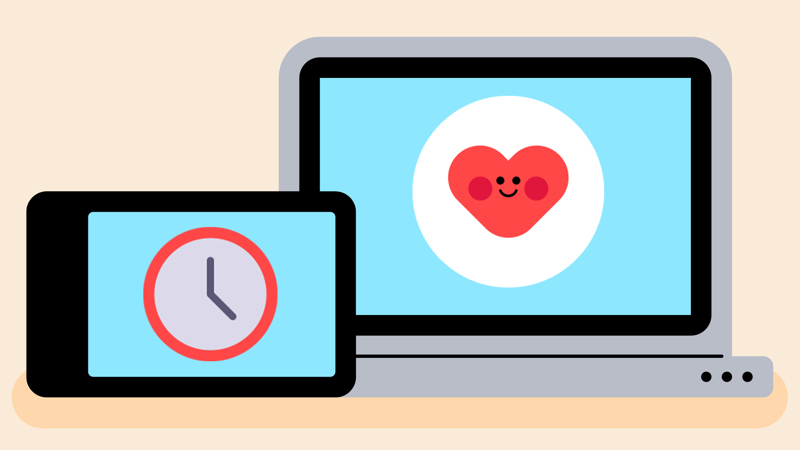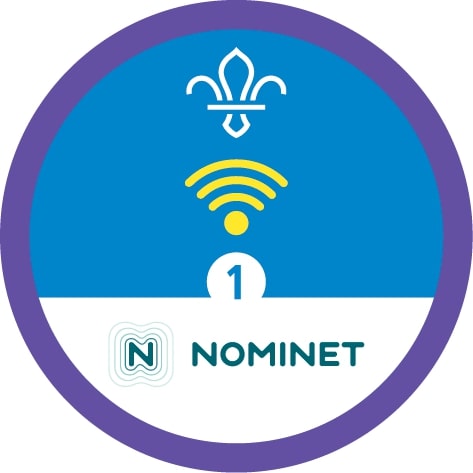
Take on a screen-time switch off challenge
You’ll need
- Pens or pencils
- Scrap paper
- Smartphone or tablet
Before you begin
- Use the safety checklist to help you plan and risk assess your activity. Additional help to carry out your risk assessment, including examples can be found here. Don’t forget to make sure all young people and adults involved in the activity know how to take part safely.
- Make sure you’ll have enough adult helpers. You may need some parents and carers to help if you’re short on helpers
Setting up this activity
- Print enough ‘Switch off’ sheets for each person. Alternatively, get crafty and make your own by cutting a large circle from card and dividing it into 24 segments. If you want to do this, find time in your session and gather any materials you’ll need.
- If you're working towards the Digital Citizen Staged Activity Badge, everyone should see if they can keep track of how much time they spend online over a whole week too.
What’s your screen time?
- Everyone should think about the different screened devices they use. They could think about phones, tablets, laptops and computers, gaming, and television.
- Everyone should think about the benefits of screen time. It’s a great way to communicate and socialise with friends (including playing games), access information (including researching and studying), online shop, be entertained, or learn (through reading or watching tutorials).
- Everyone should chat about why it’s important to balance screen time and green time. It’s important to make space for other activities such as sports and creative activities; it’s also important to spend time with people face to face. Time away from screens helps people develop confidence and communication skills, allows them to rest their eyes, and supports positive mental health.
- Everyone should think about how long they spend on screens each day. Remind people to be honest – there’s no space for judgement in this activity.
- If people have their phones with them, they could look at downloading an (age appropriate) app to track how long they spend on their phone. They could also use a pen and scrap paper to jot down an estimate of how long they spend on screens each day.
- Everyone should think about how to adjust devices to support ‘digital wellness’. This could include adjusting the blue light setting, using night or wind down modes, or setting time limits. If people have their phones with them, they could explore the settings and make changes.
Set the challenge
- Everyone should work together to think about ways they could take back control over their screen time. This could look like putting some boundaries in place, for example, switching their phone off at night, removing screens from their bedroom, or having a set amount of screen-free time before bedtime (or in the morning).
- Everyone should work together to think of screen-free ‘green time’ ideas. There aren’t any right or wrong answers here – different things appeal to different people. We’ve included some ideas below, in case you get stuck.
- Give everyone a ‘Switch off’ sheet and set the switch off challenge. For every hour people spend on screens, they should spend an hour doing something offline (and screen-free).
- It’s useful to emphasise that, for this activity, school doesn’t count (because young people don’t have much choice over their activities). They should focus on their free time – before and after school and at weekends.
Take the challenge
- Everyone should take their ‘Switch off’ sheet home. They should decorate a segment of the clock for each hour of free time. They should use different colours or patterns to distinguish screen time from green time.
- Everyone should complete the sheet for a 24-hour period. For an extra challenge, they could take it on for more than one day or even a whole week.
- Everyone should bring their ‘Switch off’ sheet to the next meeting. People should compare how they found the challenge – was it ever tricky? What were the best screen-free activities they tried? Did anyone do anything really adventurous?
Go outside:
- Move in a way that feels good for you (for example, walking, running, or jogging)
- Try a sport
- Organise a game
- Garden
- Litter pick
- Walk the dog
Get creative:
- Make or build something
- Draw or paint
- Try a new craft
- Have a dance party
- Learn a new language
- Take some photos
- Sing or play music
- Write something
Explore:
- Somewhere you’ve never been before
- A new green space
- A gallery
- A library
- A museum
- A theatre
Get practical:
- Fix something
- Tidy, clear out, or organise something
- Paint or upcycle something
- Learn a new skill
- Volunteer somewhere
Reflection
This activity’s all about living healthily and improving wellbeing. Balance is really important when it comes to wellbeing. Technology can be positive, but it can take over and take up too much of people’s lives. Has anyone ever experienced negative effects from being online for too long? Perhaps people have had headaches, felt anxious or bad-tempered, or even felt disconnected. Has anyone ever experienced FOMO (fear of missing out)? There’s no easy fix but stepping away from devices to do something else or spend time with people can help. Social media isn’t always a true reflection of life – no one’s life is perfect (even the most famous celebrities’). Exercise is really important for health and wellbeing too, so it’s great for people to find something that works for them. Exercise and technology can even go together, for example, a couch to 5k app, podcasts when exercising, or things like geocaching.
Safety
All activities must be safely managed. You must complete a thorough risk assessment and take appropriate steps to reduce risk. Use the safety checklist to help you plan and risk assess your activity. Always get approval for the activity, and have suitable supervision and an InTouch process.
- Online safety
Supervise young people when they’re online and give them advice about staying safe. Take a look at our online safety or bullying guidance. The NSPCC offers more advice and guidance, too. If you want to know more about specific social networks and games, Childnet has information and safety tips for apps. You can also report anything that’s worried you online to the Child Exploitation and Online Protection Command. As always, if you’ve got concerns about a young person’s welfare, including their online experiences, follow the Yellow Card to make a report.
- People could also use an online programme, graph, or template to track their time (though they’ll have to make sure to balance it with offline time!).
- You could jot down ideas to make lists of screen-free activities for everyone to use
- Not everyone will have access to all of the different screened devices – try not to presume everyone has the same access.
- Digital support or using screens for accessibility obviously doesn’t count as ‘screen time’ to match with offline activities. You may want to discuss how technology (and screens) are great for accessibility.
- Not everyone has the same access to outdoor space or activities – help people find things that work for them, and remind everyone not to judge.
All Scout activities should be inclusive and accessible.
If anyone’s especially skilled at coding or game creation, they could make an app or game for everyone to track their screen time.
You could give everyone a head start on the screen-free time by taking part in an activity such as a wide game, hike, or sport. Get outside if you can (and put phones and other devices away somewhere safe). Everyone could think about how they feel being away from their phones – they may feel anxious or out of touch at first. Help everyone to focus on enjoying the outdoors by spending a few moments breathing and appreciating their surroundings.
Everyone can work together to make adjustments to their devices (and their routines) to make it all a bit healthier for them. They can explore the best apps to help them, if they want to. Different things work for different people, so everyone should experiment to find what’s best for them.
